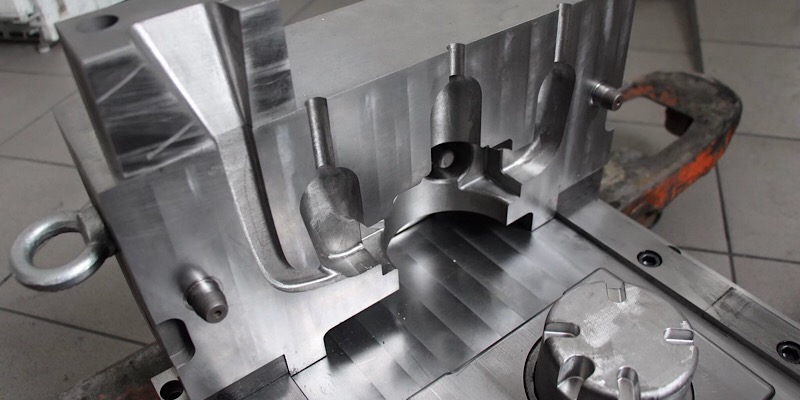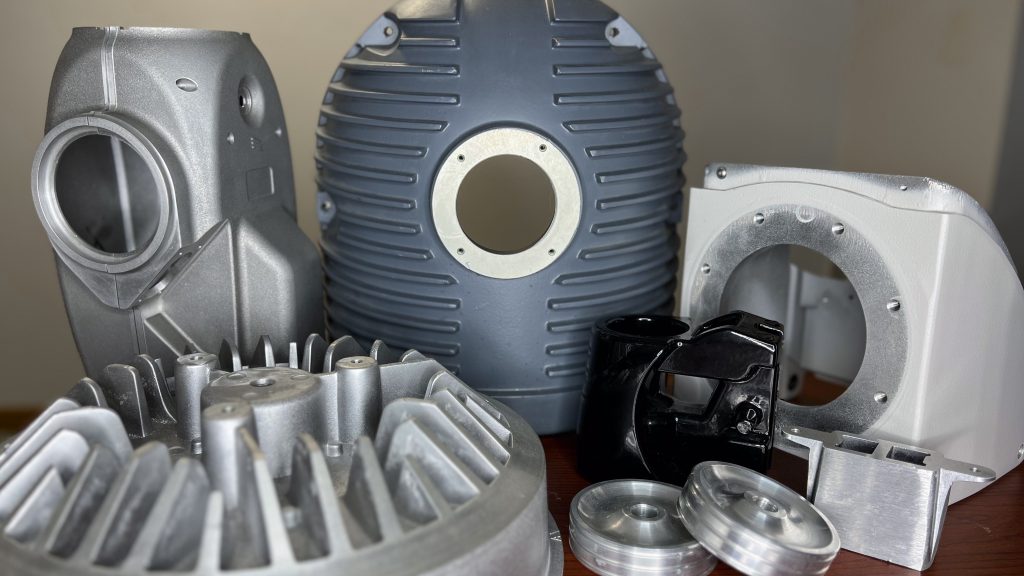Discovering the Perks and Practical Use Light Weight Aluminum Castings in Today's Market
Aluminum spreadings have ended up being significantly pertinent in numerous sectors due to their distinct characteristics. Their lightweight nature and resistance to corrosion make them appropriate for requiring applications. Furthermore, the superior strength-to-weight proportion uses substantial benefits in layout and manufacturing. As industries remain to explore their potential, the complete extent of light weight aluminum spreadings' applications and benefits continues to be to be fully discovered. What exists ahead for this flexible product?
The Lightweight Benefit of Light Weight Aluminum Castings
Although lots of materials are used in manufacturing, aluminum spreadings stand out mostly as a result of their lightweight residential or commercial properties. This characteristic makes aluminum spreadings an attractive option for different sectors, specifically in aerospace and auto applications, where weight decrease is necessary for boosting gas efficiency and efficiency. The lightweight nature of aluminum allows producers to create components that are simpler to manage and mount, inevitably minimizing labor expenses.
The capability to create complicated forms without significant weight penalties enables designers to introduce while maintaining structural stability. Aluminum castings can properly change larger materials, resulting in significant savings in shipping and functional expenses. Their lightweight benefit likewise adds to improved product long life, as lighter elements typically cause lowered deterioration on machinery. On the whole, the light-weight residential or commercial properties of aluminum spreadings offer manufacturers with an one-upmanship, promoting advancements in item style and performance across various fields.

Outstanding Rust Resistance
Aluminum spreadings have an all-natural resistance to oxidation, which greatly boosts their long life in different environments. This inherent building not just adds to their durability yet likewise lines up with the lightweight advantage that aluminum provides. Consequently, aluminum castings are significantly acknowledged for their remarkable rust resistance in numerous applications.

Naturally Resistant to Oxidation
One of the standout features of aluminum castings is their outstanding rust resistance, which comes from an all-natural oxidation procedure. When subjected to air, aluminum responds to develop a thin, protective layer of light weight aluminum oxide. This layer serves as an obstacle against more oxidation and protects the underlying steel from corrosive components such as moisture and salts. Unlike various other metals, this oxide layer is self-repairing; if damaged, it swiftly reforms when revealed to air. This unique residential or commercial property enhances the durability of light weight aluminum castings in different environments, making them suitable for applications in industries such as aerospace, automobile, and marine. As a result, the all-natural resistance to oxidation considerably reduces upkeep costs and boosts the reliability of light weight aluminum castings in requiring problems.
Lightweight Sturdiness Benefit
The lightweight nature of aluminum castings adds considerably to their resilience, making them a helpful option in different sectors. This outstanding durability is mostly attributed to light weight aluminum's inherent resistance to rust, which is enhanced additionally through anodizing and other surface therapies. Unlike lots of steels, aluminum does not corrosion; rather, it creates a protective oxide layer that shields it from ecological damage. This building is especially beneficial in sectors such as automobile and aerospace, where weight decrease is important without endangering stamina. In addition, the longevity of light weight aluminum spreadings lessens upkeep prices and substitutes, giving economic advantages gradually. Their lightweight sturdiness and corrosion resistance placement light weight aluminum castings as a premium material for modern-day production applications.

Superior Strength-to-Weight Ratio
An impressive characteristic of light weight aluminum castings is their premium strength-to-weight ratio, that makes them very desirable in different applications. This inherent residential or commercial property enables light weight aluminum spreadings to withstand substantial stress while remaining light-weight, an important consider sectors such as aerospace, auto, and production. Designers usually favor light weight aluminum spreadings for elements that need both toughness and minimized weight, boosting gas performance and efficiency.
The high strength-to-weight ratio also facilitates the design of intricate forms and frameworks, making aluminum castings functional for complicated applications. In addition, the capacity to keep structural integrity under tough problems assurances durability and reliability in items, from airplane frames to auto components. This benefit contributes to the expanding trend of making use of light weight aluminum spreadings in innovative layouts, inevitably resulting in improved functionality and effectiveness across diverse sectors. The superior strength-to-weight proportion of light weight aluminum castings places them as a pivotal material in modern-day design and production.
Cost-Effectiveness in Production
Cost-effectiveness in light weight aluminum spreading production is mainly achieved with lowered material waste and reliable manufacturing processes. By enhancing layouts and utilizing sophisticated strategies, manufacturers can lessen excess product use while preserving high quality criteria. This approach not only decreases production costs however likewise adds to more lasting techniques within the industry.
Decreased Material Waste
Minimizing product waste in light weight aluminum casting processes considerably boosts manufacturing performance. By enhancing the layout and production strategies, business can lessen excess scrap and boost source application. This decrease in waste not only reduces product prices yet also adds to an extra sustainable manufacturing model. The capacity to recycle aluminum additional supports cost-effectiveness, enabling producers to reclaim and reuse products without jeopardizing top quality. As the market progressively concentrates on sustainability, decreased product waste straightens with ecological goals while concurrently improving earnings. Eventually, efficient usage of resources enhances the competitive placement of services out there, making aluminum spreadings a desirable choice in various applications. The strategic technique to decreasing waste shows a commitment to both ecological and financial obligation.
Efficient Production Processes
While standard manufacturing procedures can sustain considerable costs, light weight aluminum casting supplies a much more reliable choice that improves overall production profitability. This technique decreases product waste and permits exact control over the production procedure, leading to minimized labor and functional expenses. The capacity to produce complicated shapes with fewer steps even more improves production, contributing to shorter preparations. Additionally, aluminum's lightweight nature and superb thermal conductivity enable power savings during production and in the final application. By utilizing contemporary spreading technologies, makers can achieve greater throughput without giving up quality. As a result, light weight aluminum spreading sticks out as a cost-effective service, making it an eye-catching alternative for companies aiming to enhance their manufacturing procedures in today's affordable market.
Convenience Across Industries
Aluminum castings show impressive flexibility across different sectors, as they can be customized to fulfill specific requirements and applications. In the automotive sector, light weight aluminum spreadings are made use of in engine blocks, transmission real estates, and wheels, using light-weight yet long lasting solutions that enhance gas effectiveness. The aerospace market likewise benefits from aluminum spreadings, using them in structural components and engine parts as a result of their strength-to-weight proportion.
In the durable goods market, producers employ aluminum spreadings for items ranging from kitchenware to furniture, offering both aesthetic allure and performance. The electronics market makes use of light weight aluminum spreadings for housings and heat sinks, making sure efficient thermal management. Additionally, the construction sector leverages light weight aluminum castings for building aspects and structural components, enhancing toughness and design flexibility. This wide applicability highlights aluminum spreadings as a crucial source, meeting the varied needs of various markets while maintaining high performance and dependability.
Sustainability and Environmental Effect
As markets significantly prioritize lasting practices, light weight aluminum castings become an environment-friendly choice because of their recyclability and reduced environmental impact. Aluminum is among the most recycled materials around the world, with the capability to be repurposed numerous times without degradation of high quality. This characteristic considerably reduces the demand for raw products and energy consumption associated with primary light weight aluminum manufacturing, which is energy-intensive.
Additionally, aluminum castings add to lightweight styles, leading to fuel effectiveness in transport applications such as automotive and aerospace markets. Their durability and resistance to rust prolong item life-spans, further minimizing waste and resource use gradually. Lots of producers are adopting accountable sourcing and ecologically friendly manufacturing methods, enhancing the sustainability of light weight aluminum spreading procedures. In general, light weight aluminum castings stand for a functional service for services aiming to decrease their environmental impact while accomplishing performance and effectiveness.
Developments in Aluminum Casting Technologies
Recent advancements in light weight aluminum spreading technologies have actually substantially enhanced the performance and quality of manufacturing procedures. Developments such as 3D printing and advanced mold-making strategies have enabled suppliers to produce intricate styles with reduced product waste. This shift not only boosts the accuracy of cast components yet likewise reduces lead times, permitting fast prototyping and faster market entrance.
Furthermore, the incorporation of advanced computer simulations aids in forecasting prospective flaws during spreading, leading to higher-quality outputs (Aluminum Castings). Making use of light-weight alloys has actually also added to the growth of stronger, more long lasting items, catering to markets varying from automotive to this contact form aerospace
Additionally, automated spreading procedures have arised, minimizing human error and boosting manufacturing rate. Jointly, these technologies are transforming the aluminum spreading landscape, driving better competitiveness and sustainability in manufacturing. As markets remain to advance, these innovations will play a crucial function in conference future needs for performance and quality.
Frequently Asked Questions
Exactly How Do Aluminum Castings Compare to Other Metals in Terms of Thermal Conductivity?
Aluminum castings exhibit exceptional thermal conductivity compared to numerous metals, such as steel and iron - Aluminum Castings. Their light-weight nature and efficient heat distribution make them perfect for applications requiring reliable thermal administration in different markets
What Are the Typical Problems Located in Light Weight Aluminum Castings?
Usual issues in light weight aluminum castings include porosity, shrinkage, inclusions, and surface irregularities. These issues often arise from improper cooling rates, poor mold and mildew style, or contaminations, affecting the overall top quality and performance of the final item.
Can Light Weight Aluminum Castings Be Recycled, and Exactly how?
Aluminum spreadings can be recycled successfully. The procedure involves accumulating, melting, and reforming the aluminum, which minimizes waste and saves resources. This recycling adds to sustainability while maintaining the material's buildings for future usage.
What Are the Normal Lead Times for Aluminum Spreading Production?
Typically, preparations for light weight aluminum spreading production array from 2 to six weeks, relying on elements such as complexity, tooling needs, and production volume. Performance can improve with recognized distributor relationships and enhanced manufacturing processes.
Just how Does the Surface Area Complete Affect Aluminum Casting Efficiency?
The surface area finish considerably influences aluminum spreading efficiency by influencing rust resistance, visual high quality, and rubbing characteristics. A smoother surface enhances toughness and functionality, while a rougher like it texture can enhance adhesion for subsequent finishes or treatments.
Several materials are made use of in production, aluminum castings stand out largely due to their lightweight residential properties. When revealed to air, light dig this weight aluminum reacts to create a slim, protective layer of aluminum oxide. Cost-effectiveness in aluminum spreading production is mainly accomplished via reduced material waste and effective manufacturing processes. Minimizing product waste in light weight aluminum casting processes greatly improves production efficiency. Eventually, effective usage of raw products reinforces the competitive position of companies in the market, making aluminum castings a positive option in numerous applications.